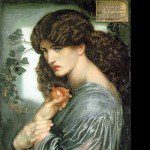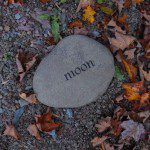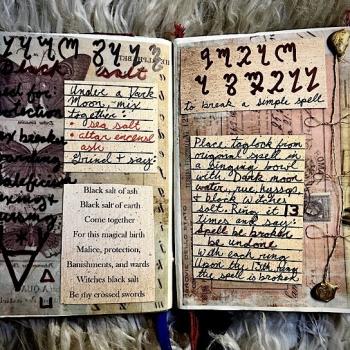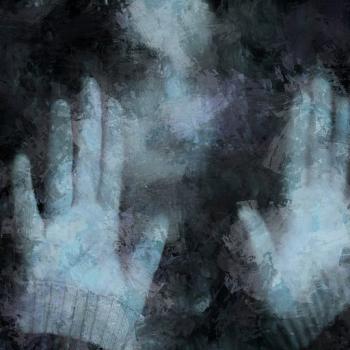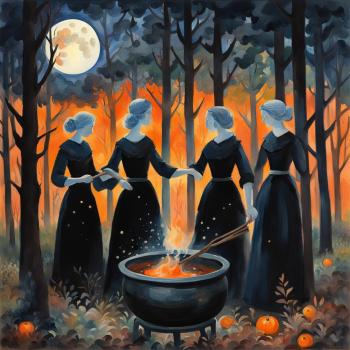 The Pagan musical tradition is rich, old, vital and powerful. Since before recorded history, we humans have been making music a part of our sacred observances. Modern Pagan music is a lot like the music of tribal peoples; it is lively, vital, and tells stories in an intuitive language that speaks to our relationship with the natural world and the heartbeat of life-force. I think every Pagan Guide should make music a part of their learning program, and I’m here to tell you why.
The Pagan musical tradition is rich, old, vital and powerful. Since before recorded history, we humans have been making music a part of our sacred observances. Modern Pagan music is a lot like the music of tribal peoples; it is lively, vital, and tells stories in an intuitive language that speaks to our relationship with the natural world and the heartbeat of life-force. I think every Pagan Guide should make music a part of their learning program, and I’m here to tell you why.
Five Reasons to Use Music in Craft and Ritual
1) Music is Emotional
We get together and share music because it communicates emotion. Joy, sorrow, gratitude, love, lust, anger, pain, grief, despair, passion, ecstasy, agony; all these are easily expressed through music. A funeral dirge instantly indicates a sorrow so overwhelming that it makes you numb. A lively dance tune makes you want to get up and kick up your heels, even if you don’t follow through on the impulse. As such, a ritual that includes music involves you. Especially if you take an active part in it, by singing, dancing, drumming, or playing along, you now become a part of the experience. Rather than watching a performance, you are participating and part of what happens is driven by your energetic contribution.
A ritualist can create something that is almost unearthly with the appropriate use of music. In a Samhain ritual at a Witch’s Ball, my husband and I used background music to create an Underworld journey. Deep, somber drumming music with low strings and a deliberate beat set the tone for our journey down. By contrast, complete silence marked our communion with the dead. Our return was marked by more hopeful, slower music that made use of bell-like resonances. When we returned to life, we sang the lyrics of a song called “Drawing Down the Moon” (by Gaia Consort) to enact the Symbolic Great Rite. Most attendees told us it was the best ritual experience they’d ever had.
2) Music is a Bonding Experience
Many people go to church simply so they can sing together. Shared, familiar songs create a unity of experience. They tell you that you know the same songs and therefore, you are part of the same community. You communicate the same ideas to one another with a shared set of symbols and smile at your shared language. Even if I do no other chants in a ritual, I always finish with the same song, “The Circle is Open,” and you can see everyone smiling as they join in the familiar lyrics and share in the circle.
If the lyrics are simple and the tune is catchy (like in most chants) you can also get children involved, and then they are contributing significantly to the energy and focus of a class or ritual without taking away from it because they’re scattered and bored.
3) Music is Symbolic
Speaking of which, music is rich with symbolism by its nature. Minor chords generally indicate tension or sorrow; major chords indicate joy or excitement. Also, for the purposes of the occultist, each of the notes of the standard musical scale has a corresponding color, planet, metal and so forth, so magick can be woven simply by your choice of key. Tempo and meter can also be used for their numerological value.
4) Music is a Mnemonic Device
Setting things to music helps us to memorize them. In this way, chants and Pagan music also become teaching songs, much as they were to our Pagan ancestors. Familiar chants teach such concepts as the symbolism associated with the Goddess and the God, the Elemental Correspondences, the Cycle of the Wheel, how to cast circle and create ritual, how and why to do magick, and so forth. They teach us about the gods and about life. I used Spiral Dance’s recording of “The Witches’ Rune” to memorize the Ancient Call (the more familiar form of Doreen Valiente’s classic invocation poem) so I could use it in ritual. It was very effective.
5) Music Changes Consciousness
Music has a direct effect on our consciousness. Our brainwaves, for example, try to match any rhythm we hear. So we have been using drums, rattles, and other percussion instruments for millennia to create trances and bring us into shamanic consciousness. Frequencies also induce particular states of consciousness. Modern trance music does this just as much as ancient drums and rattles do. Solfeggio frequencies can be used to bring about particular states of awareness, and some music even contains brainwave entrainment frequencies to produce particular states of consciousness; alpha waves to relax and enter a light psychic trance suitable for working magick and ritual; theta waves for journeyworking and guided meditations; delta waves for deep trance, superhuman feats and healing; gamma waves for divine or artistic inspiration (called “awen” by the Druids); and beta waves to bring us back to waking, normal consciousness again. If you don’t want to go into all of that, just keep this in mind; rhythm and tempo create trances. Slow, deliberate dirge-like beats slow down your mind into deep trance and meditation, and fast-paced dancing beats set your heart racing to keep up and encourage you to dance, which also creates a trance by heightening consciousness levels instead of slowing them down.
Sources of Music
YouTube is the obvious source for Pagan music. Use “Pagan music” as your search criteria. There is a channel called “Keep Music Pagan” that has a decent selection and might give you a place to start.
Artists to look for include (but by no means are limited to): Heather Alexander, Alexian, Isaac Bonewitz, Vanessa Cardui, Castalia, Chalice and Blade, Circle of Women, Heather Dale, Damh the Bard, Meg Davis, Leslie Fish, Gaia Consort, Hagalaz Runedance, Dano Hammer, Inkubus Sukkubus, Lady Isadora, Kenny Klein, Kiva, Sharon Knight, Gwydion Pendderwyn, Laura Powers, Reclaiming, Wendy Rule, Lisa Thiel, and S.J. Tucker. Most Pagan artists seem to be drawn to Bandcamp these days; and the ones who aren’t are generally available through CD Baby, Amazon, or iTunes.
An excellent website to find Pagan chants is “Pagan Chant of the Month,” maintained by Ivo Dominguez Jr. (a.k.a. Panpipe). It’s no longer updated regularly but the available list of chants, with short mp3 files to demonstrate them so you can learn them by ear, is an exceptionally valuable resource.
Next column: The six senses and how to make use of them in teaching and learning the Craft.
Seekers and Guides is published on alternate Mondays. Follow it via RSS or e-mail!


